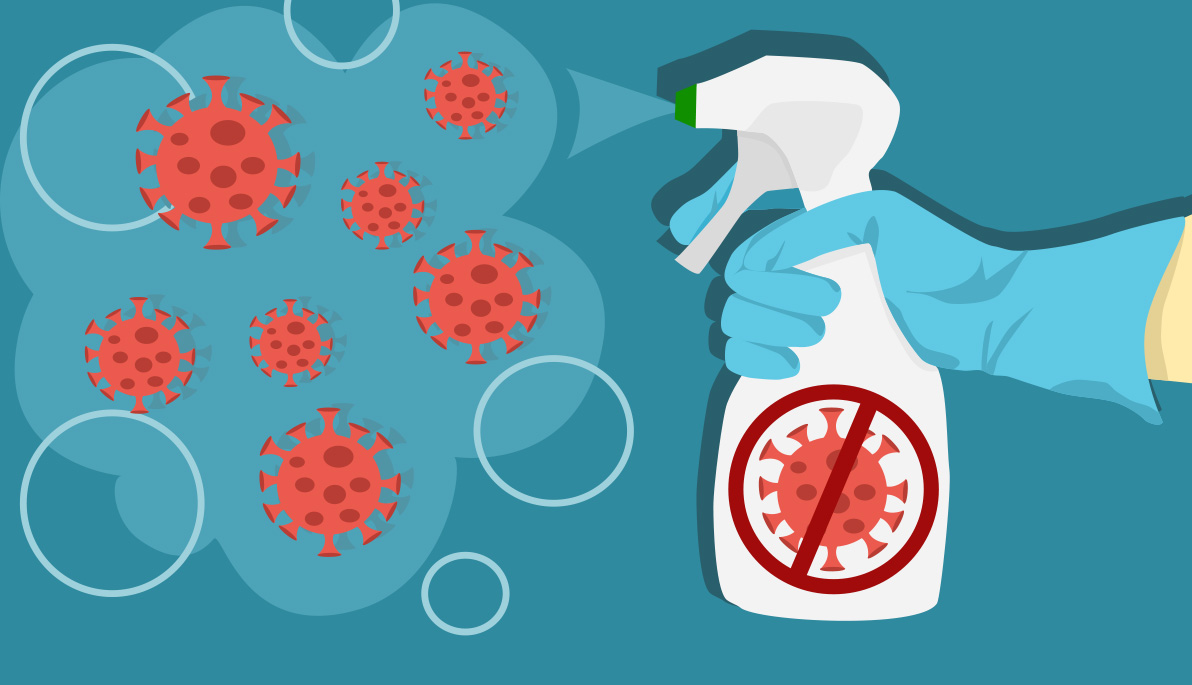News
New York Tech Microbiologist Shares Home Disinfection Tips
April 7, 2020

Bryan Gibb
As COVID-19 remains top of mind, more people are turning to scientists and researchers to understand how they can prevent the spread of the virus at home.
Microbiologist Bryan Gibb, Ph.D., assistant professor of biological and chemical sciences, has been following the spread of SARS-CoV-2, the virus responsible for COVID-19. He sat down with The Box to talk about the likelihood of picking up the virus from surfaces, the best way to disinfect your home, and what to do if someone in your household tests positive.
In your opinion, how likely is someone to contract COVID-19 from packages or items from the grocery store?
Many people are concerned that they could contract COVID-19 from packages, food from the grocery store, or door-knobs and such. This fear stems from studies indicating that coronaviruses can survive on surfaces for as long as a week under certain conditions. I personally consider the risk of contracting COVID-19 like this rather low for a few reasons.
Many of the tests used to detect coronavirus look for viral RNA. These tests are very sensitive, but the presence of viral RNA is not the same as measuring infectious virus. It’s like if you find a dinosaur fossil one day while walking in the park, this does not mean there are living dinosaurs—it means that you found evidence that it was there at one time. So I think many of these measurements saying coronavirus can be detected on surface X for Y days need to be interpreted cautiously.
We also do not currently have much evidence supporting the transmission of COVID-19 from inanimate objects. It’s certainly possible, but so far it appears that this virus is primarily transmitted from person to person. We still have much to learn about this virus, and it’s possible we will find out that indirect transmission is more common, but at the moment it appears that these risks are low for most people.
What should I do if a member of my household tests positive for COVID-19, or suspects they may have been infected?
In such a situation, the infected individual may be shedding the virus, so viral loads on surfaces will likely be higher, and therefore the risk of transmission is higher. The best practice is to isolate the infected person as much as possible (i.e., they live in a bedroom by themselves) for a period of 14 days post-exposure, or several days following the last fever (this depends on whose recommendation is being followed).
During this time, food should be delivered to the isolated individual, and all materials in and out of the room should be treated as if they are contaminated with the virus and handled appropriately (clothes washed, surfaces disinfected, etc.).
What’s the takeaway message?
I recommend that people follow the standard FDA and CDC guidelines for cleaning and disinfecting. For some, that means upping their cleaning game, but not specifically to protect from coronavirus. We know many other pathogens are readily transmitted from contaminated food, fomites (dead skin cells, i.e. dust) and other inanimate objects.
It’s unnecessary to disinfect everything you buy from the grocery store, leave packages outside for a day, or conduct excessive cleaning of your home. Most transmissions of pathogens from contaminated surfaces or food are due to touching your face with your hands or eating contaminated food. So the best way to prevent any type of infection from these surfaces is by washing your hands regularly and properly cooking your food. I recommend that everyone wash their hands immediately after returning from the grocery store, when you put your food away, unpack an Amazon box, etc. Proper hand-washing, avoiding touching your face, and reducing exposure by staying at home as much as possible are the best ways to avoid contracting COVID-19.



_Thumb.jpg)

